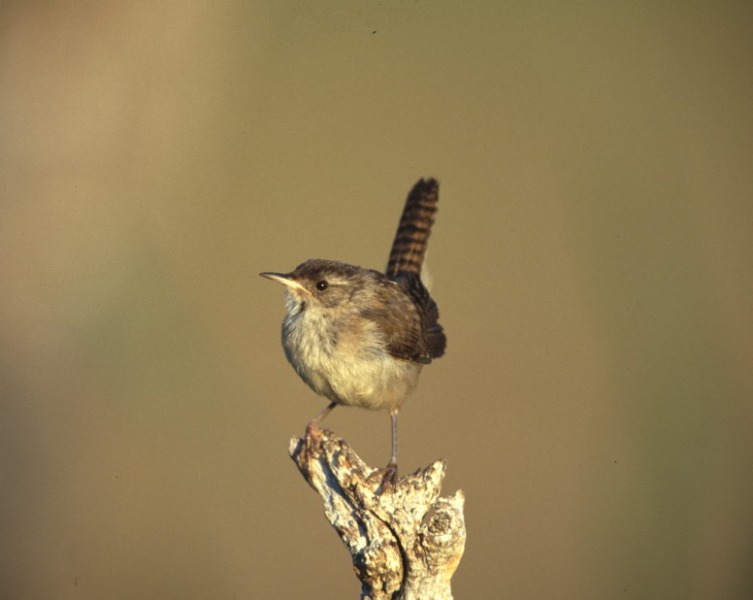Marsh Wren: A very vocal, perky fellow
By Dave Hanks
You hear them long before you can locate where they’re at. This little “bundle-of-energy” builds a large nest for such a small bird. The nest hangs between the Bulrushes or Cattails – the habitat which they prefer. The nest is domed, but has a hole in the side for entrance. The male builds the nest. In fact, he builds several nests in hopes that one of them will appeal to a female. Or better yet – several females will be attracted to his nests. The female, after nest selection, will line it with soft materials.
It may be a little brown bird (4-5”), but it’s anything but dull. Like other wrens, its tail is striped with crossways bands and points straight up into the air. This gives the bird a very saucy demeanor. It’s an energetic singer, rarely quiet for very long. Both sexes sing. The male sings long and loud to proclaim his territory, and a softer, quieter song for courtship. The female’s song, while sitting on the nest, is the softest of all.
The female alone, incubates the eggs – which may be as many as 8 to 10 in temperate zones or as few as 2 or 3 in hot areas. Two weeks of incubation and two weeks to fledging is normal. The male helps in the feeding of the chicks, and they raise more than one brood each year.
A photo file of marsh species is not complete without a picture of this saucy little bird. They bob up and down through the marsh sedges, and you must be quick to catch one out in the open.
|
